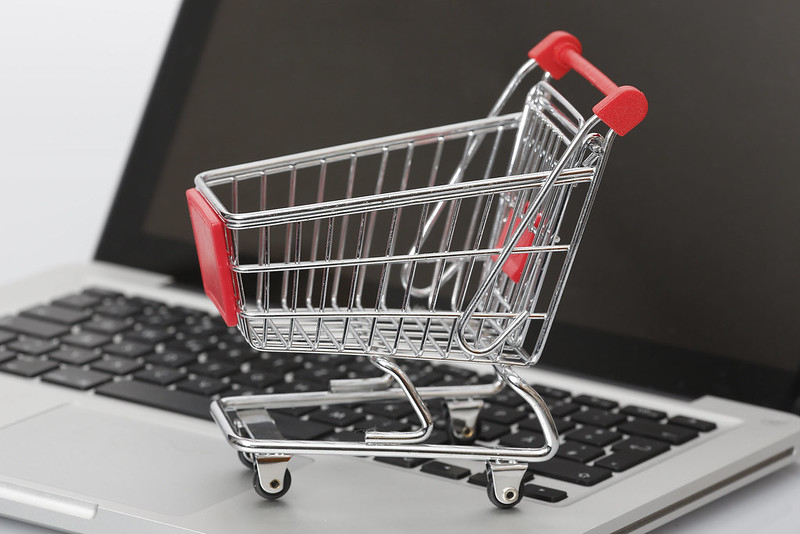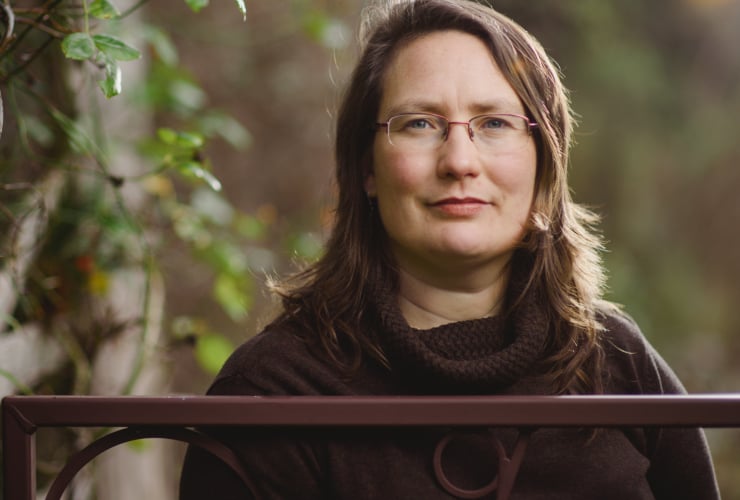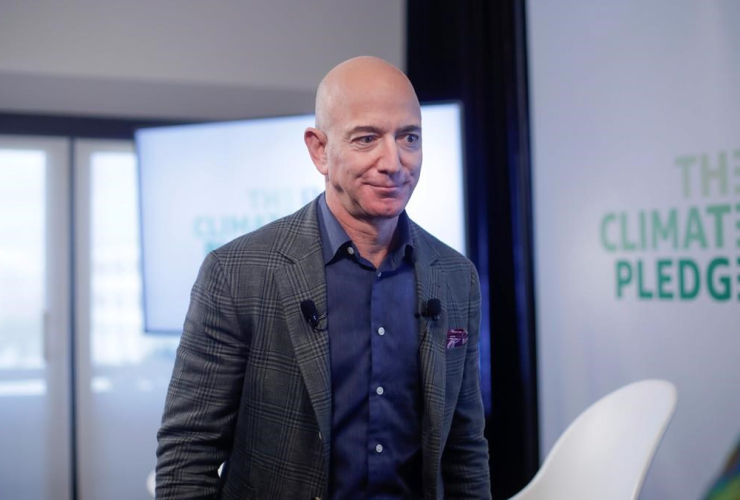This story was originally published by Grist and appears here as part of the Climate Desk collaboration
The coronavirus pandemic has transformed how Americans get our food. We’re no longer going to restaurants; we’re limiting our trips to the grocery store. Many of us are, for the first time, ordering groceries online. That’s causing huge spikes in demand on e-commerce sites like Amazon, which has moved quickly to expand its grocery delivery services and transform Whole Foods Markets into fulfillment centers for online orders.
But if Amazon consolidating control over yet another sector of the economy during a crisis makes you uncomfortable, Jeff Bezos would like to offer a reframe: Actually, buying your groceries online is better for the planet.
That, at least, is the striking claim made in Bezos’ annual letter to Amazon shareholders, which the e-commerce behemoth’s CEO released last month. In a section on Amazon’s climate impact, Bezos asserts that shopping online is “inherently” more efficient, from a carbon emissions perspective, than going to the store. He references a study conducted by Amazon that found that ordering Whole Foods groceries online reduces the carbon emissions associated with every item in a grocery basket by 43 percent compared with driving to Whole Foods.
So, should you give up your last real reason to enter public spaces and start one-click ordering those potatoes?
Not necessarily. Even though Amazon has yet to publicly release the study in question (we’ve asked), several experts Grist spoke with said that on average, ordering online often reduces the carbon footprint of grocery shopping. But the word average is key. This finding doesn’t scale down to the individual level neatly, and the way you get your food might be very climate-friendly already, no matter what the Amazon man says. What’s more, when it comes to the climate impact of our food choices, what we eat is far more important than how we get it. And there are other ethical considerations at play here beyond the carbon footprint of your meal.
According to Shelie Miller, a sustainability researcher at the University of Michigan who has studied the environmental impact of different forms of grocery shopping, when researchers compare shopping online to shopping at a brick-and-mortar outlet, what they’re mainly talking about is the so-called “last-mile problem.”
For groceries, the last-mile problem refers to how food makes that final leg in its journey from farm to table, whether it’s coming from Trader Joe’s or an Amazon warehouse. It’s a step where a lot of carbon emissions can occur, especially if you’re hopping in your SUV and driving 5 miles to pick up ingredients for dinner. In that case, it might be more efficient for a delivery truck to drop off the ingredients for you, especially if that truck is already making dozens of other trips in your neighborhood.
“If you are a person in a single household and you drive to the store and drive back, that is an entire car that is dedicated to a round trip to and from the store,” Miller said. While a delivery truck is likely to have higher carbon emissions per mile compared with your personal car, “the miles associated with that grocery cart are much smaller because you have lots of groceries on a single truck,” Miller said.
Food that comes straight from a distribution hub also avoids all of the carbon emissions associated with the grocery store itself. Michael Webber, a professor of energy resources at the University of Texas, Austin, notes that grocery stores tend to be “very energy intensive” compared with warehouses. That’s because their operators have to create a comfortable 72 degree F environment for shoppers to walk around in while simultaneously keeping perishable food items at a much chillier 38 degrees F.
“If you go to a warehouse, it’s much more efficient because there’s no customers to make comfortable,” Webber said. “Your workers can wear insulated overalls. So you refrigerate the whole thing and it’s more efficient.” Grocery stores also add another step in the supply chain from farm to consumer that results in additional food waste, another huge climate problem.
It’s for all of these reasons that, while Miller hasn’t seen the study Bezos references in his shareholder letter, she thinks that its conclusion that online grocery shopping delivers carbon savings over driving to the store “make sense.” So does Anne Goodchild, a supply chain and transportation logistics researcher at the University of Washington. The 43 percent emissions reductions figure quoted in the shareholder letter, she said, is “certainly not outside the range of outcomes we’ve seen in our studies” that looked at the transportation and logistics of grocery delivery.
Webber had a slightly more cautious take. “It depends,” he said.
Indeed, while Amazon can tout the benefits of online grocery shopping all it wants, that doesn’t mean getting an Amazon Fresh box delivered to your doorstep is the most eco-friendly choice you can make. If you’re already walking, biking, or driving a Tesla to the grocery store, getting your eggs and milk dropped off via a truck will likely cause their last-mile emissions to rise. Switching to online shopping might also change your shopping behavior in ways that make it worse for the environment. Perhaps, instead of getting all of your groceries in one carefully planned shopping outing, you start placing lots of smaller orders online, resulting in more truck trips.
Or perhaps your online ordering isn’t replacing your personal grocery store trips at all, but merely supplementing them. “This is a huge one,” Webber said. “Is this a replacement or an alternative? While we’re quarantined it looks like a replacement,” but that might not continue to be the case as lockdown restrictions start to ease.
“Amazon has all kinds of data about their own operations,” Goodchild said. “What they don’t know is how people behave. So it’s all based on assumptions.”
It’s also important to bear in mind that how our food makes that last-mile journey to our doorstep has a much smaller climate impact than the types of food we’re eating. In a recent study comparing the environmental impact of meals prepared from Blue Apron meal kits with those same meals made from grocery store ingredients, Miller and her colleagues found that food production was responsible for more than 65 percent of a meal’s total carbon footprint. Raising cattle, for instance, requires significant land and resources, which, along with the animals’ methane burps, contribute to beef’s outsized climate impact. Other types of meat and dairy products also tend to have a high carbon footprint, because they take more energy and resources to produce compared with fruits and vegetables.
Compared with food production, Miller’s study found that last-mile emissions, meanwhile, averaged just 4 percent of the carbon footprint for meal kit meals, and 11 percent for grocery store meals.
“Transportation and logistics associated with the last mile are a pretty small overall contribution to the total environmental impact of food,” Miller said. The “only possible way” Amazon could have arrived at a 43 percent carbon savings for online delivery, she said, is if the company was only looking at transportation and logistics and not at food production (as was the case in the other studies Goodchild cites).
There are also bigger picture considerations about how the rise in online shopping we’re witnessing due to coronavirus will impact our food system in the long term. Emily Broad Leib, director of the Harvard Law School Food Law and Policy Clinic, says that while getting groceries delivered seems like the “right direction to go” from a public health standpoint right now, she worries this trend will make it even harder for smaller retailers and family farms to compete. Broad Leib notes that in nearly every state where low-income families can purchase groceries online with food stamps through the Supplemental Nutrition Assistance Program (SNAP), Amazon and Walmart are the only approved retailers.
“A lot more people are already or will be on SNAP in the coming months,” Broad Leib said, noting that 37 million Americans were participating in the program in January, the most recent available data. “We’re putting a huge thumb on the scale for big retailers.”
Whether that allows retail giants to consolidate control over the grocery industry in the wake of the pandemic remains to be seen. But all of our individual food choices in this moment will help determine that, and it’s worth seriously considering if we want to live in a world where Amazon dominates yet another sector of consumer spending, particularly given the company’s recent failures to protect its frontline workers and its decision to fire dissenting voices who’ve spoken up about safety concerns and climate change.
It’s possible the pandemic will herald a major change in how we get food. What that change looks like ought to depend on more than which company currently has the most efficient delivery system.
When I buy products locally I
When I buy products locally I employ my neighbours and keep more of my money in my own community. In season I can buy "fresher-than-Bezos" produce from nearby farms. I can also get great poultry and other meats raised, processed and sold here that never get shipped off to distant feed lots or sometimes inhumane processing plants. We already have too much separation dividing people from their food. Most people have a weak understanding of what they eat, how it's grown or raised, or where it's from. Meat, poultry, fish or produce - I want to see it before I buy it. I've had experiences with Amazon that were less than satisfactory. Why would I place blind confidence in them to deliver what I'm going to consume?
Even if delivery is better
Even if delivery is better than going shopping, that doesn't mean Amazon, or any large corporation, is the best way to accomplish that delivery.
One of the hopeful things I've noticed is local delivery options starting up, like the local bakery that decided to drive around town and deliver their bread and pasteries themselves, then uses a megaphone to call out more customers while delivering orders, or the bread baker in Halifax who bikes around leaving bags of bread on doorknobs for her established customers.
Perhaps it is time to return to having regular delivery direct from local producers, built and run as satisifying, small businesses providing sustainable services, instead of get-mega-rich corporations designed to dehumanize the very services that used to build communities.
I have really missed going to
I have really missed going to the market myself! My son is shopping for us as my husband and I are at risk. I can't see the vegetables myself and decide to get something else if the thing I want doesn't look great. I have to buy food just once or maybe twice a week, when I used to go every day. My son is, fortunately, a good judge of food and will text me if he wants to check on something while he is shopping. But I certainly wouldn't trust some Amazon person to do my shopping for me! And that says nothing about buying local produce, local baking, meat or fish from trusted sources, etc. Sorry Mr Bezos, you will not convince me to shop online and not go to my local stores. Once this is over, I will be back to my not-very-efficient and probably-more-expensive routines, which make me happy and keeps my local stores going.
I'm glad others have pointed
I'm glad others have pointed out the local aspect missing from the story. As a farmer I try to minimize the inputs I need, source those inputs locally, and then sell as much of my food as possible locally. Food sovereignty is going to be much more important going forward and as far as I can tell it is not on any government's radar (Canadian agricultural policy is focussed on maximizing trade surpluses, not on feeding Canadians).
The comment about meat reflects the way GWP was calculated before 2019. That approach was replaced at COP 24 with GWP*. The result is vastly lower numbers for ruminant livestock; see https://www.bva.co.uk/news-and-blog/blog-article/ruminant-agriculture-ca...
While much is made of the GHG benefits of a vegan diet, please think in systems. For example, if you are buying your veggies from several thousand miles away (e.g. salads in winter, citrus fruits) there are large processing and transportation costs to minimize biocontamination. If you are buying local greenhouse veggies in winter (good for you!) that requires heated greenhouses covered in plastic (usually two layers). That plastic only lasts about 7 years in a stable climate, and the heating and plastic are both from fossil fuels.
Finally, another possible way forward is localizing online groceries. I am part of a co-operative of farmers offering such a service. We pool together a couple dozen producers' offerings into an online store, customers have an ordering window every Saturday and receive their order delivered to their home the following Wednesday or Thursday.




![The Amazon Spheres, a tourist attraction on the Amazon headquarters campus in Seattle, seen under construction in March 2017. Author/SounderBruce [CC BY-SA 4.0]](https://www.nationalobserver.com/sites/nationalobserver.com/files/styles/nat_teaser/public/img/2019/09/10/800px-amazon_spheres_from_6th_avenue_march_2017.jpg?itok=hfRcBeNQ)
Comments